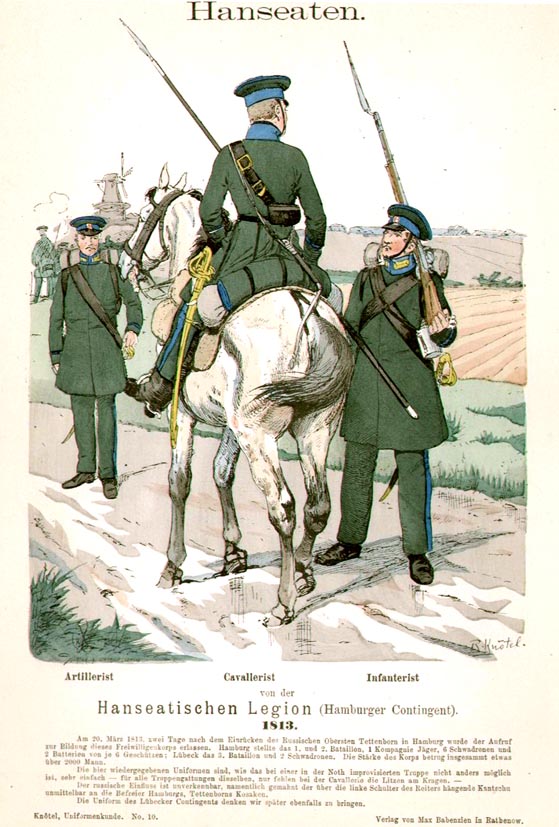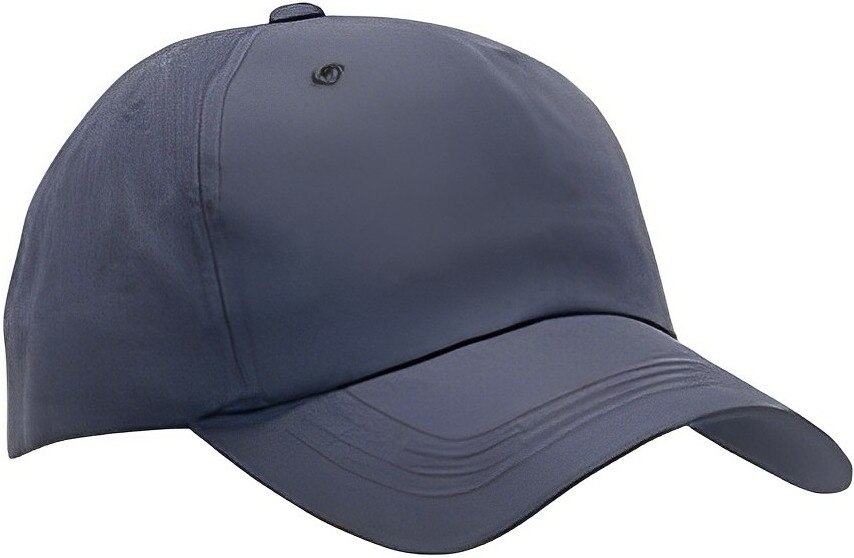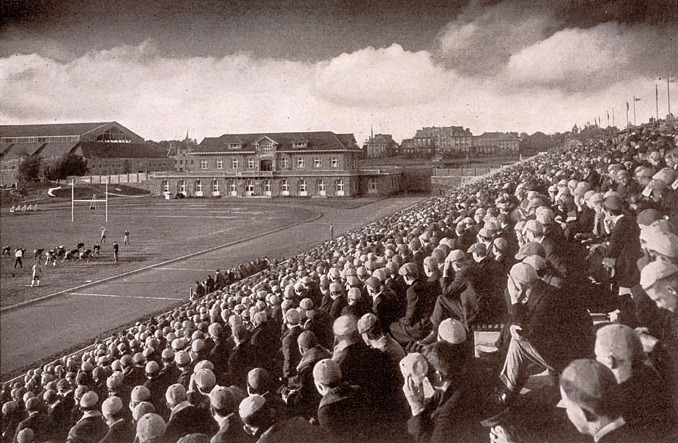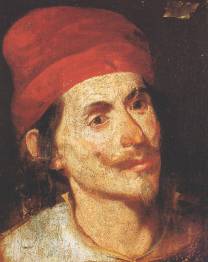|
Cap
A cap is a flat headgear, usually with a visor. Caps have crowns that fit very close to the head. They made their first appearance as early as 3200 BC. Caps typically have a visor, or no brim at all. They are popular in casual and informal settings, and are seen in sports and fashion. They are typically designed for warmth, and often incorporate a visor to block sunlight from the eyes. They come in many shapes, sizes, and are of different brands. Baseball caps are one of the most common types of cap. Types * Ascot cap * Ayam * Baggy green * Balmoral * Beanie (North America) * Bearskin * Beret * Biretta * Busby * Canterbury cap * Cap and bells * Cap of maintenance * Casquette * Caubeen * Caul * Coif * Combination cap (also known as a service cap) * Coppola * Cricket cap * Deerstalker * Do-rag * Dutch cap * Dixie cup, an enlisted sailor's cap, also worn by first-year midshipmen at Annapolis * Fez * Flat cap (also known as a Kerry cap in Ireland (slang of Paddy cap â ... [...More Info...] [...Related Items...] OR: [Wikipedia] [Google] [Baidu] |
Combination Cap
The peaked cap, peaked hat, service cap, barracks cover or combination cap is a form of headgear worn by the armed forces of many nations, as well as many uniformed civilian organisations such as law enforcement agencies and fire departments. It derives its name from its short visor, or peak, which was historically made of polished leather but increasingly is made of a cheaper synthetic substitute. The term forage cap is also used though that also applies to "field service cap" or the side cap. Other principal components are the crown, band and insignia, typically a cap badge and embroidery in proportion to rank. Piping is also often found, typically in contrast to the crown colour, which is usually white for navy, blue for air force and green for army. The band is typically a dark, contrasting colour, often black, but may be patterned or striped. In the British Army, each regiment and corps has a different badge. In the United States Armed Forces, the cap device is uniform thr ... [...More Info...] [...Related Items...] OR: [Wikipedia] [Google] [Baidu] |
Cap And Bells
A cap is a flat headgear, usually with a visor. Caps have crowns that fit very close to the head. They made their first appearance as early as 3200 BC. Caps typically have a visor, or no brim at all. They are popular in casual and informal settings, and are seen in sports and fashion. They are typically designed for warmth, and often incorporate a visor to block sunlight from the eyes. They come in many shapes, sizes, and are of different brands. Baseball caps are one of the most common types of cap. Types * Ascot cap * Ayam * Baggy green * Balmoral * Beanie (North America) * Bearskin * Beret * Biretta * Busby * Canterbury cap * Cap and bells * Cap of maintenance * Casquette * Caubeen * Caul * Coif * Combination cap (also known as a service cap) * Coppola * Cricket cap * Deerstalker * Do-rag * Dutch cap * Dixie cup, an enlisted sailor's cap, also worn by first-year midshipmen at Annapolis * Fez * Flat cap (also known as a Kerry cap in Ireland (slang of Paddy cap â ... [...More Info...] [...Related Items...] OR: [Wikipedia] [Google] [Baidu] |
Baseball Cap
A baseball cap is a type of soft hat with a rounded crown and a stiff bill projecting in front. The front of the hat typically displays a design or a logo (historically, usually only a sports team, namely a baseball team, or names of relevant companies, when used as a commercial marketing technique). The hat may be "fitted" to the wearer's head or the back may have elastic, a plastic prong-in-a-hole (multiple holes with one prong that can be inserted), Velcro, a zipper, or a tri-glide slide so that it can be quickly adjusted to fit different wearers' heads. The baseball hat is a part of the traditional baseball uniform worn by players, with the brim pointing forward to shield the eyes from the sun. Since the 1980s, varieties of the hat have become prevalent in the United States and many other nations, both for utilitarian (protecting the eyes from the sun) and fashion accessory purposes. History In 1860, the Brooklyn Excelsiors wore the ancestor of the modern rounded-top base ... [...More Info...] [...Related Items...] OR: [Wikipedia] [Google] [Baidu] |
Bearskin
A bearskin is a tall fur cap, usually worn as part of a ceremonial military uniform. Traditionally, the bearskin was the headgear of grenadiers, and remains in use by grenadier and guards regiments in various armies. Bearskins should not be confused with other types of fur military headdresses, notably the smaller busby. History The cloth caps worn by the original grenadiers in European armies during the seventeenth century were frequently trimmed with fur. The practice fell into disuse until the second half of the eighteenth century, when grenadiers in the British, Spanish, and French armies began wearing high fur hats with cloth tops, and, sometimes, ornamental front plates. Imitating their Prussian counterparts, French grenadiers are described as wearing bearskins as early as 1761. The purpose appears to have been to add to the apparent height and impressive appearance of these troops both on the parade ground and the battlefield. During the nineteenth century, the e ... [...More Info...] [...Related Items...] OR: [Wikipedia] [Google] [Baidu] |
Baggy Green
The baggy green is a cricket cap of dark myrtle green colour, which has been worn by Australian Test cricketers since around the turn of the twentieth century. The cap was not originally baggy as evidenced by photographs of early players. The cap has long been a symbol of national pride in Australia, and was described by the chief executive of the MCC as the "most famous cricket cap in the world". While respect for the baggy green cap has always been very high, it has grown in stature since the 1990s, chiefly due to the efforts of captains Mark Taylor and Steve Waugh. Waugh regularly expressed his belief that the honouring of the traditions of the game was critical to the success of a team: "To be able to partake of these rituals and traditions has meant you have been awarded the highest honour in Australian cricket — you have been selected to play for your country." The baggy green cap was originally supplied to the player as part of a kit of equipment, and a new one ... [...More Info...] [...Related Items...] OR: [Wikipedia] [Google] [Baidu] |
Sailor Cap
A sailor cap is a round, flat visorless hat worn by sailors in many of the world's navies. A tally (cap), tally, an inscribed black silk ribbon, is tied around the base which usually bears the name of a ship or a navy. Many navies (e.g. Germany) tie the tally at the rear of the cap and let the two ends hang down to the shoulders as decorative streamers. In the Royal Navy the tally is tied off in a bow over the left ear and in the early 20th century it was customary when going on shore leave to tie a small coin in the bow to make it stand out. In wartime, as a security measure, many navies replace the name of the ship with a generic title (e.g. "HMS" = "His/Her Majesty's Ship" in the Royal Navy or "South African Navy"). The cap may be further embellished with a badge, cockade or other accessory. Visorless caps of this kind began to be worn in the mid 19th century. The more rigid type of sailor hat with a wide, flat crown is also known as square rig (this refers generally to a ty ... [...More Info...] [...Related Items...] OR: [Wikipedia] [Google] [Baidu] |
Cricket Cap
A cricket cap is a type of soft cap, often made from felt, that is a traditional form of headwear for players of the game of cricket, regardless of age or gender. It is usually a tight-fitting skullcap, usually made of six or eight sections, with a small crescent shaped brim that points downwards over the brow to provide shade for the eyes. It is often, but not always, elasticised at the rear to hold it in place upon the wearer's head. Sometimes, rather than tight-fitting, the cricket cap comes in a baggy variety, that is always kept in place by elastic. Description The style of cap is also often used as official headwear as part of school uniforms for boys from private schools, particularly in the United Kingdom and throughout the Commonwealth of Nations. Although not common in the modern period, the cricket cap used to be a fashionable form of headwear for people who were casually dressed, and not necessarily worn just for playing the game. Cricket caps are usually, but n ... [...More Info...] [...Related Items...] OR: [Wikipedia] [Google] [Baidu] |
Beanie (North America)
In the United States, a beanie is a head-hugging brimless cap, sometimes made from triangular panels of material joined by a button at the crown and seamed together around the sides. Beanies may be made of cloth, felt, wool, leather, or silk. In many US regions and parts of Canada the term "beanie" refers to a knitted cap (often woollen), alternately called a "stocking cap" or (especially in Canada) a "toque". Styles One popular style of the beanie during the early half of the twentieth century was a kind of skullcap made of four or six felt panels sewn together to form the cap. The panels were often composed of two or more different contrasting colors to give them a novel and distinctive look. This type of beanie was also very popular with some colleges and fraternities, as they would often use school colors in the different panels making up the headgear. Another style of beanie was the whoopee cap, a formed and pressed wool felted hat, with a flipped up brim that formed a ... [...More Info...] [...Related Items...] OR: [Wikipedia] [Google] [Baidu] |
Cap Of Maintenance
Typical of British heraldry, a cap of maintenance, known in heraldic language as a ''chapeau gules turned up ermine'', is a ceremonial cap of crimson velvet lined with ermine, which is worn or carried by certain persons as a sign of nobility or special honour. It is worn with the high part to the fore, the tapering tail behind. It may substitute for the torse (a twisted roll of fabric) in the heraldic achievement of a person of special honour granted the privilege by the monarch. It thus appears in such cases on top of the helm and below the crest. It does not, however, feature in the present royal coat of arms of the United Kingdom, which shows the royal crest upon the royal crown, itself upon the royal helmet. Origins The origin of this symbol of dignity is obscure. One might speculate that the origin relates to the Old French verb ''maintenir'' – "to hold" or "to keep". A purpose of the cap was to keep a crown or coronet secure (and comfortable) on the head, thus its functi ... [...More Info...] [...Related Items...] OR: [Wikipedia] [Google] [Baidu] |
Headgear
Headgear, headwear, or headdress is the name given to any element of clothing which is worn on one's head, including hats, helmets, turbans and many other types. Headgear is worn for many purposes, including protection against the elements, decoration, or for religious or cultural reasons, including social conventions. Purposes Protection or defence Headgear may be worn for protection against cold (such as the Canadian tuque), heat, rain and other precipitation, glare, sunburn, sunstroke, dust, contaminants, etc. Helmets are worn for protection in battle or against impact, for instance when riding bicycles or motor vehicles. There are also hats that are worn for protection from the cold. Fashion Headgear can be an article of fashion, usually hats, caps or hoods. The formal man's black silk top hat was formerly an indispensable portion of the suit, and women's hats have, over the years, attained a fantastic number of shapes ranging from immense confections to no more than a f ... [...More Info...] [...Related Items...] OR: [Wikipedia] [Google] [Baidu] |
Coppola (cap)
The coppola () is a traditional kind of flat cap typically worn in Sicily and Calabria, where is it known as ''còppula'' or ''berretto'', and also seen in Malta, Corsica, and Sardinia (where it came to be known, in the local language, as , , and or , possibly from the Latin ). Today, the coppola is widely regarded, at least in Italy, as an iconic symbol of Sicilian or Calabrian heritage. History One popular theory of the coppola is that it originates in Anglo-Saxon land, where the tradition of civil caps has been found at least since the late 16th century during the reign of the Tudors, when on Sundays and on holidays all males over six years old – with the exception of nobles and high-ranking people – had to wear woolen headdresses produced only and exclusively in England: so, in fact, it provided for an act of parliament of 1571, the short purpose of which was to support the domestic production of wool, thus protecting it from the import of foreign goods. This type of ... [...More Info...] [...Related Items...] OR: [Wikipedia] [Google] [Baidu] |



.jpg)




